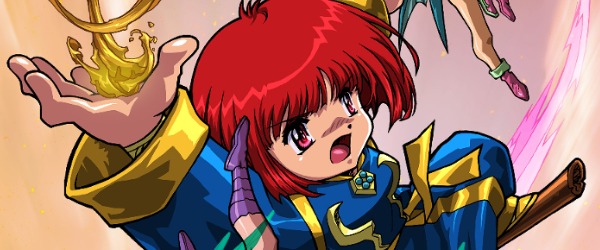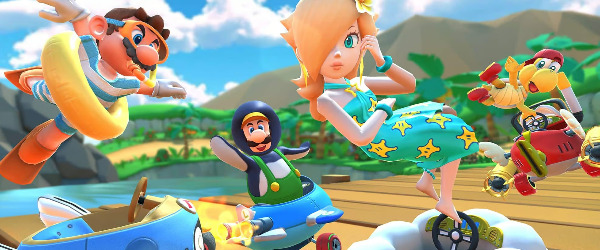
The New 3DS: Nintendo’s Challenges Going Forward - Article
by VGChartz Staff , posted on 31 August 2014 / 7,197 ViewsWith the news that Nintendo's new 3DS model will come with an upgraded CPU, making games specifically made for the system unplayable on older systems, comes the understandable concern from some fans that they’ll be locked out of purchasing certain games until they upgrade. As much as this announcement will have come as a shock to many gamers, we should probably have seen something like this coming.
Many of you will recall that Nintendo have done this before, most recently with the Nintendo DSi, which had a slightly bumped up spec sheet compared to the original DS, as well as a new camera for developers to work into their games. Not many physical games were actually released solely for the DSi platform (five, to be precise), but the potential for developers to make games exclusively for it was still there. It didn’t cause too much controversy at the time, in part because the DSi was released a full five years after the original handheld and because developers almost universally released their DSi games on the DS as well, and those that did not opted for digital distribution.

Another, perhaps more prescient example, is that of the Game Boy Color. At the time of its release, many believed the Game Boy Color was just a new version of a handheld they already owned (the original Game Boy), not a completely new console. However, most games that were released for the GBC were not backwards compatible and could not be played on the original Game Boy. Fortunately, the gap between the two handhelds was a full nine years; more than enough in most cases to prevent consumer frustration.
The 3DS, however, has only been out for a little over three years, likely four by the time it releases internationally. This makes it one of the earliest upgrades in console history. This shorter time span between upgrades can largely be seen as a response to the challenges posed by smartphones and the way in which these devices have eaten into the audience that is receptive to handheld gaming devices and, ultimately, has limited the number of customers still willing to purchase a true, dedicated handheld gaming device.
The rise of smartphones, with their own ever-increasing specs and quick upgrade cycles has undoubtedly put a lot of pressure onto dedicated handhelds like the Vita and 3DS. Where the nature of smartphones allows for better hardware on a yearly basis, Sony and Nintendo need several years for their handheld investments to pay off.

Nintendo's answer? The new 3DS. This new system fixes enough of the shortcomings of the original 3DS handheld to be considered a whole new console, as well as a re-invention. One of the biggest advantages of this new handheld is a faster CPU, which will allow the system to function a lot faster than its predecessor. However, this new CPU could also end up proving to be a controversial feature, locking out the 3DS’s current install base of 44 million from certain games and forcing customers to upgrade if they want to play all future 3DS titles.
Developers and publishers are thankfully likely to approach this opportunity with some caution, and will likely attempt to develop games for both the old and new 3DS's, with a view to capturing as many potential customers as possible. We need only look at the early years of the new generation of home consoles for an example of this attitude at work. Few publishers want to risk investing in a hugely expensive project geared towards a small install base, so many games early in this cycle have been cross-gen projects, allowing them to appeal to both the huge install bases of the PlayStation 3 and Xbox 360 (83 million each, albeit many owners probably no longer play them), as well as the much smaller install bases of the PlayStation 4 and Xbox One (10 and 5 million, respectively).
The same thing will probably happen with the original 3DS and the new 3DS, with a few notable exceptions, most likely driven by Nintendo themselves (such as the port of Xenoblade Chronicles, which was announced exclusively for the new 3DS). This hopefully means that for the foreseeable future new 3DS games will continue to be made available for the original 3DS.

One of Nintendo's biggest challenges will be in selling this new console to the mass market and getting the message across that this is a brand new handheld. We already have an example of Nintendo struggling in this manner with the Wii U. Nintendo’s naming of the console was clever but ultimately counter-productive; all too many customers failed to realise it was actually a new console and Nintendo's own marketing efforts did almost nothing to counteract the impression that it was just an expensive tablet-based update to the original Wii. It was a similar story with the 3DS in relation to the DS. Nintendo have to do a better job this time around in order to prevent a similar level of customer confusion for this new 3DS.
This new 3DS announcement, whilst potentially very lucrative from a business standpoint in short term, may serve to confuse and possibly alienate some customers in the long term, especially if developers quickly jump ship to this new, more powerful platform, and if Nintendo themselves fail to be clear in their marketing. If that happens then the new 3DS may prove to be a great way to shift more hardware, but a poor way of maintaining the dedicated handheld market.






















